Text

Next week, I graduate with my BFA in Art. This was my final piece of Illustration coursework. Hoping that it'll be part of the pitch package for a real book before long. 😊
Billions of Mouths to Feed
Like most birds, the passenger pigeon was omnivorous, feeding on a wide variety of plant and insect matter. The most important of its food sources were mast-producing trees. A single pigeon could eat half its body weight in a day, and flocks wandered thousands of miles in search of a bountiful harvest; it was this habit of travel that gave the bird its name. Pigeons showed a preference for the mast of the American beech, the white oak, and the American chestnut (a tree whose own catastrophic population collapse, resulting from imported disease, may have played a role in the concurrent decline of the pigeon).
283 notes
·
View notes
Text

some birds declared extinct this year
bachman's warbler | bridled white-eye | kauai akialoa
#art#holocene#recently extinct#aves#bachman's warbler#vermivora bachmanii#bridled white eye#zosterops conspicillatus conspicillatus#kaua'i 'akialoa#akialoa stejnegeri
737 notes
·
View notes
Text
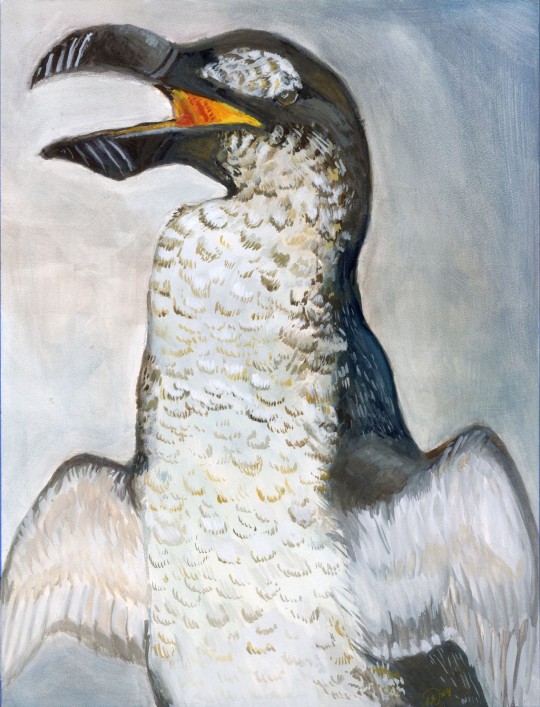

Norfolk Kākā (bottom) and Great Auk!
Project for one of my classes. Gouache on aquabord.
150 notes
·
View notes
Text
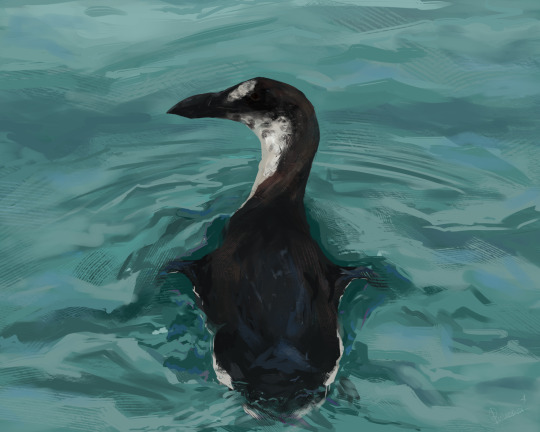
A Great auk, a young individual, swims about in the seas of the North Atlantic. Once a common sight, now reduced to nothing but memories
2K notes
·
View notes
Text

[2404/11080] Choiseul pigeon - Microgoura meeki
(extinct)
Order: Columbiformes (pigeons and doves)
Family: Columbidae
Image credit: John Gerrard Keulemans (1904)
147 notes
·
View notes
Text

Day 3 of January extinct birds - the hoopoe starling or Réunion starling
These guys are so so pretty, and their crest was also mobile and expressive like a cockatoo's. People previously thought they are related to the hoopoe, but turned out they are a starling, hence the name. The island of Réunion saw many extinctions in the 18-19th centuries after europeans arrived, and the hoopoe starling is one of them along with an endemic ibis, night heron, owl, parrots and even a giant tortoise.
467 notes
·
View notes
Text




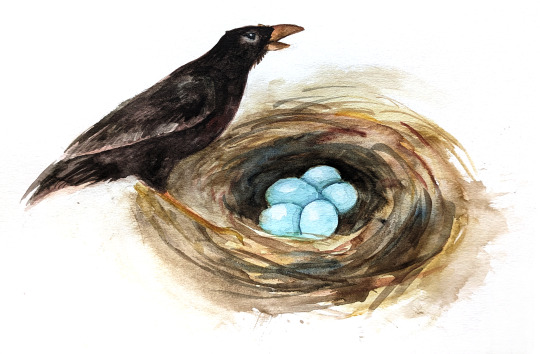
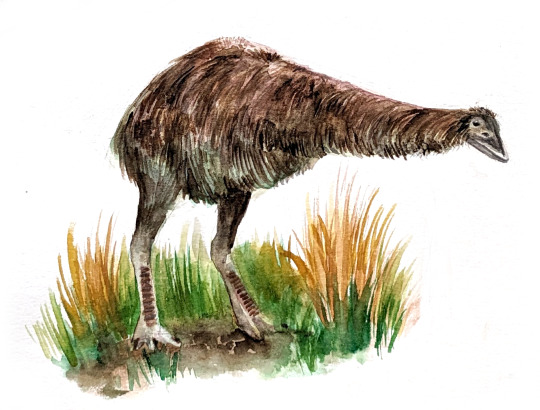
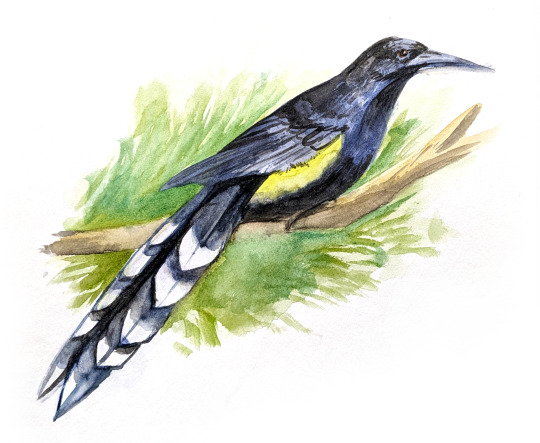
Oh, extinct birds, how I love you and miss you.
In order:
White swamphen (Porphyrio albus), native to Lord Howe Island
Huia (Heteralocha acutirostris), native to Aotearoa New Zealand
Dodo (Raphus cucullatus), native to Mauritius
Laughing owl (Ninox albifacies), native to Aotearoa New Zealand
Mysterious starling (Aplonis mavornata), native to Mauke
North Island giant moa (Dinornis novaezealandiae), native to Aotearoa New Zealand
O'ahu 'ō'ō (Moho apicalis), native to O'ahu
[Image IDs in alt text.]
#art#holocene#recently extinct#white swamphen#porphyrio albus#huia#heteralocha acutirostris#dodo#raphus cucullatus#laughing owl#ninox albifacies#mauke starling#aplonis mavornata#north island giant moa#dinornis novaezealandiae#o'ahu 'o'o#moho apicalis
155 notes
·
View notes
Text

And as the last kauai o’o sings his duet, alone, no one will respond to his song.
102 notes
·
View notes
Text
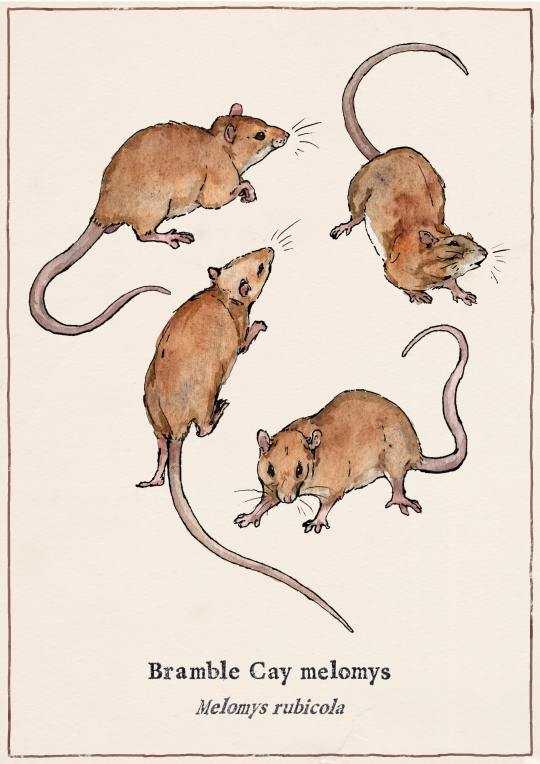
One of my pieces in my collection of works for the Mary Robinson Center Climate Conference ‘What We Stand To Lose’ exhibition, featuring the Bramble Cay melomys as it might have appeared in life.
66 notes
·
View notes
Text
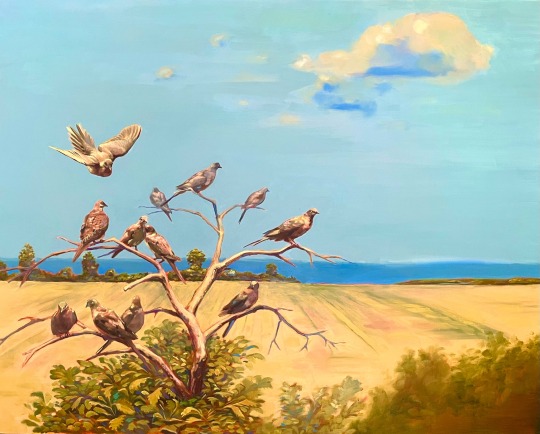
10/27/23
215 notes
·
View notes
Text

Will it crack?
Morrosaurus, Cretaceous Antarctica
Patreon • Ko-fi • Facebook • Twitter • Prints & Merch
4K notes
·
View notes
Text
Animal of the Day!
Cuban Macaw (Ara tricolor)

(Painting by Jacques Barraband)
Extinction Date- 1864
Habitat- Cuba
Size (Weight/Length)- 50 cm long
Diet- Seeds; Fruits
Cool Facts- The Cuban macaw was widespread throughout Cuba but, unfortunately, little is known about their behavior. They were thought to have nested in hollow trees and live in small flocks. They most likely ate hard seeds, like palm nuts, and tough fruits, crushing them with their beak. Cuban macaws were originally hunted for their feathers and meat by native peoples but when Europeans arrived in the 15th century, they were prized cagebirds. The macaws were captured alive and shipped off to Europe to be sold as a pet. A massive hurricane was the nail in the coffin and the rest of the macaws were wiped out. Scarlet macaws remain as the Cuban macaw’s closest relative. While scarlet macaws are considered least concern, they are still threatened by the pet trade and hunting in a similar manner to the Cuban macaw. Conservation efforts to prevent illegal poaching for both dead and alive macaws is in effect throughout their native range.
Rating- 11/10 (One of the smallest macaws and one of the most brilliantly colored.)
173 notes
·
View notes
Text

September 4th marks the 60th anniversary of the last confirmed live sighting of an Eskimo Curlew. The last Eskimo Curlew on record, a single bird, was seen and fatally shot in Barbados in 1963.
* * * *
“At sunset, September 4, 1963, a lone Eskimo curlew, flying at the head of a flock of shore birds, was shot down by a hunter on the coast of Barbados….
“On finding that the victim was not the familiar whimbrel, the hunters gave the large, buff-gray bird with a long, curving bill to Capt. Maurice B. Hutt…who…placed the bird in his deepfreeze.” It was discovered some 17 months later by James Bond
(From the US Geological Survey/Northern Prairie Wildlife Research Center website)
* * * *
The last of the curlews is also an amazing short film based on this bird
Forth Piece in my Feather ends series
106 notes
·
View notes
Photo
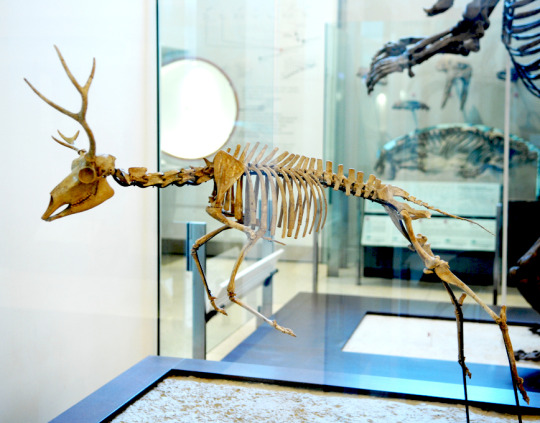
Ramoceros osborni - lived 14.5 million years ago, collected in 1901 by Barnum Brown in Cedar Creek, CO.
This graceful little fossil is a relative of the living pronghorn antelope. This species is unique in that its horns have three branches and are asymmetrical - one is always longer than the other. This is a truly genetic attribute: all the skulls of this species show the same unusual condition, although the shorter horn may be either the right or the left one.
This fossil is located in the Hall of Advanced Mammals.
544 notes
·
View notes
Text
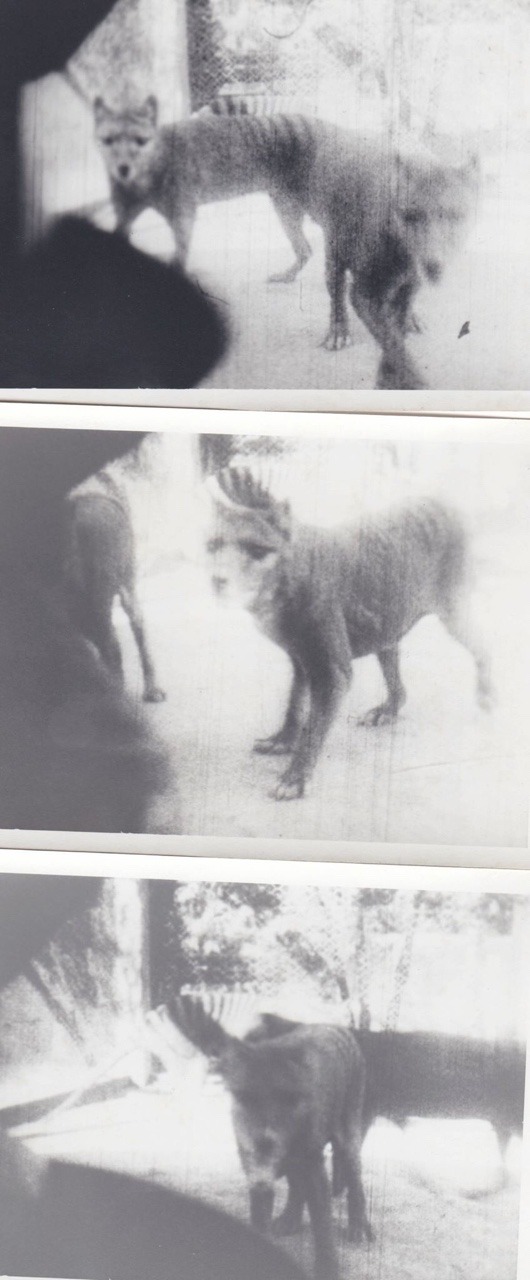

Some beautiful 35mm stills from a 1928 film of three thylacines residing at the Beaumaris Zoo, Hobart. Stills taken by James Malley.
3K notes
·
View notes
Photo

Quagga Foal
This young female Quagga foal only lived one week after capture in 1857, it now sits in the South African Museum as a mount.
2K notes
·
View notes
Text
On the 12th of August, 1883, the last captive Quagga died, with the last known wild one dying in 1878. The only photographed one was a female at the London Zoo, pictured below.
The Quagga was a subspecies of the Plains Zebra, and lived in South Africa (and was the southernmost Zebra!).
They lived in large herds, consisting of one stallion with several mares, with some staying in one herd for their entire lives. At night, one member of the herd would stay awake while the others slept to look for danger. Other members would periodically wake up during this time to grazing close to the herd. Like other Zebras, they would remove bugs from their herd mates manes and backs by nibbling one another. For members who were slow for any reason, whether young, sick or disability, the herd would match their pace, making sure they would not get left behind. If a member did, the herd would let out a unique call that the stallion used.
It is believed that the Quagga was the best candidate for domestication, and there was one Quagga-Horse hybrid in the 1810’s-1820’s.
They are most known for their unique patterning. The Quagga had a white underbelly and legs, a reddish and brown body, and thick dark stripes that faded as they reached the shoulders. This pelt would become one of the reasons they were hunted, the other being that early Dutch colonizers believed that they were competition for their grazing live-stock.
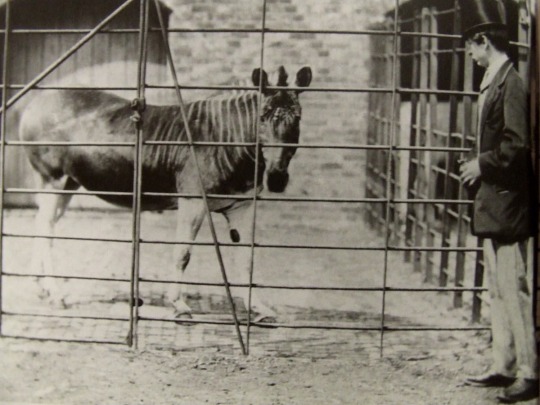
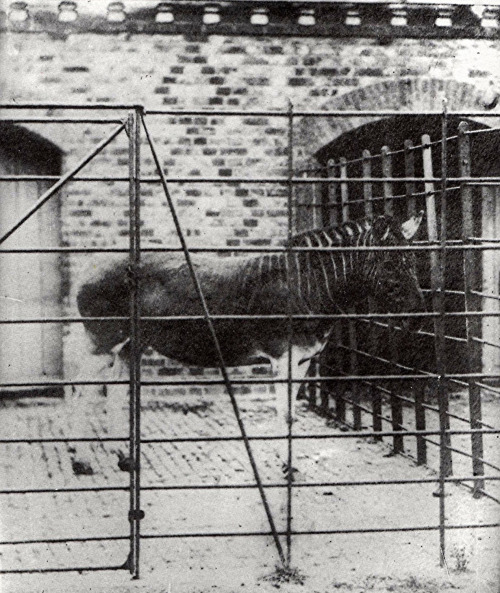
28 notes
·
View notes